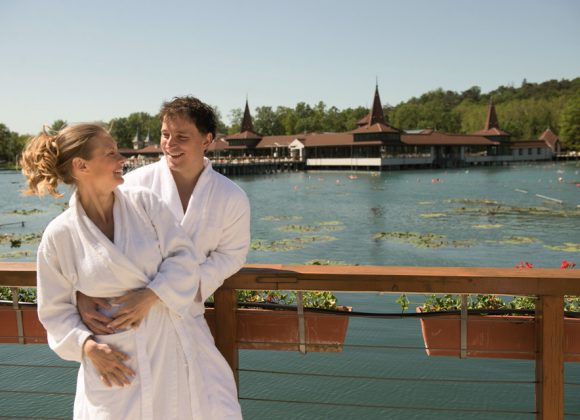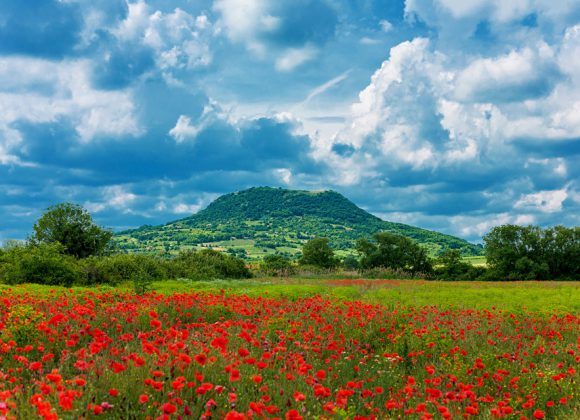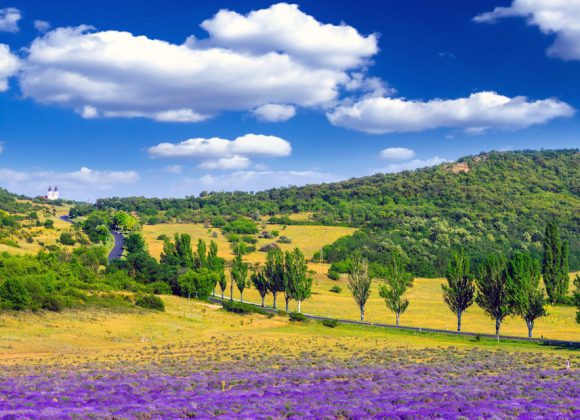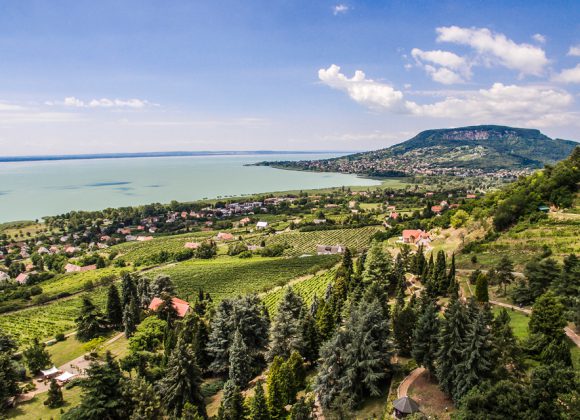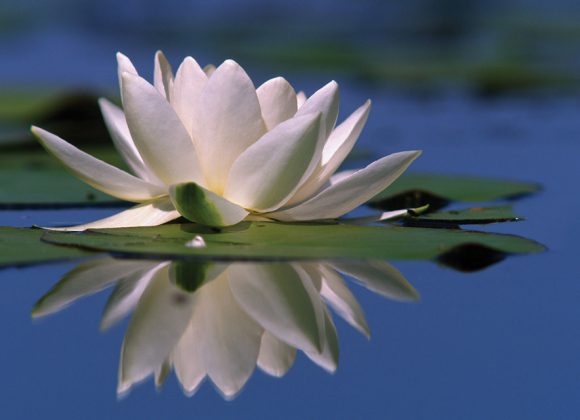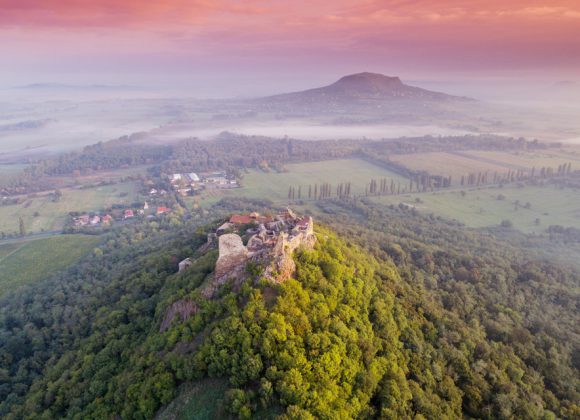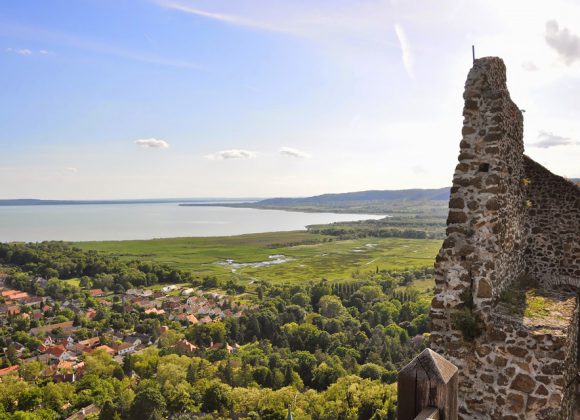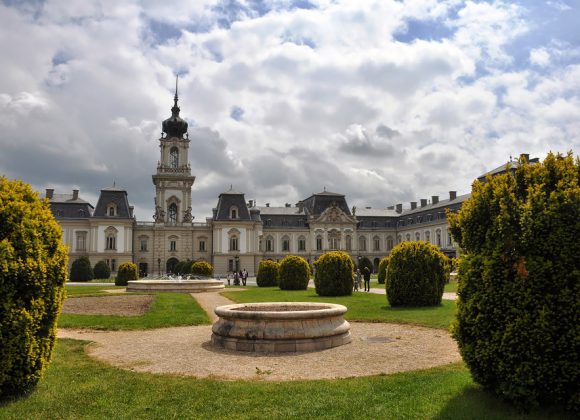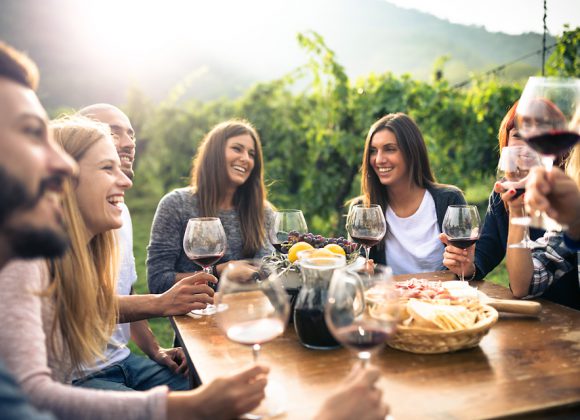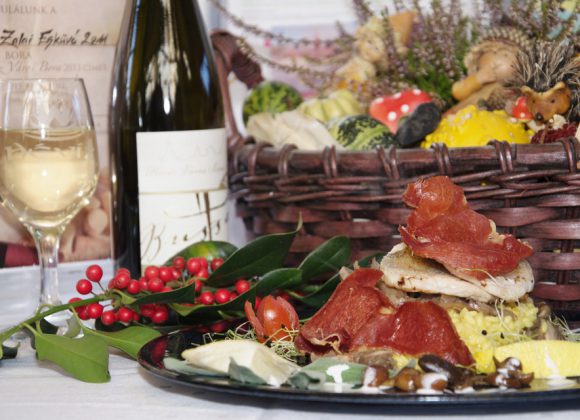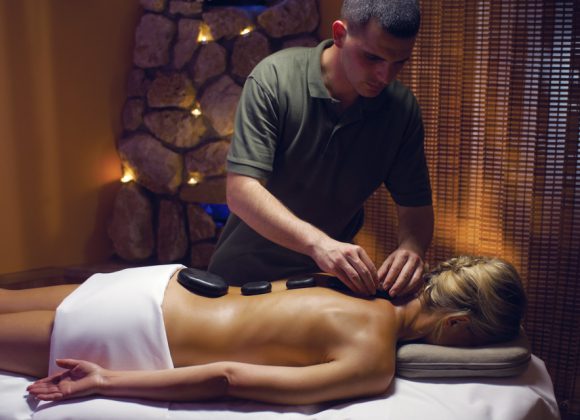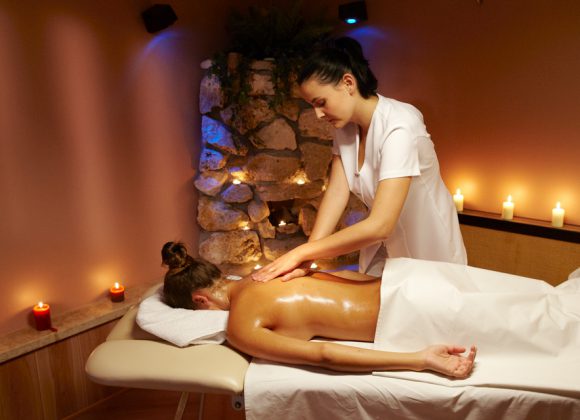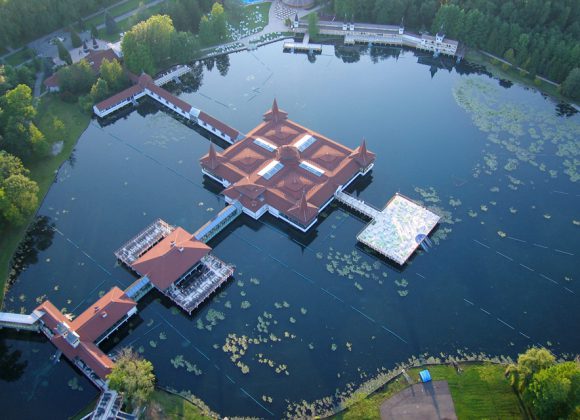Our Region
The mystical thermal lake
 The health benefits of the Hévíz thermal water were already known to the ancient Romans. This 4.4-hectare lake, unique and surrounded by a protected forest, is the largest warm medicinal water lake in Europe. Apart from the healing power of the water, the Hévíz thermal lake is unique, as the only similar lake in the world is located in Rotorua on the North Island of New Zealand.
The health benefits of the Hévíz thermal water were already known to the ancient Romans. This 4.4-hectare lake, unique and surrounded by a protected forest, is the largest warm medicinal water lake in Europe. Apart from the healing power of the water, the Hévíz thermal lake is unique, as the only similar lake in the world is located in Rotorua on the North Island of New Zealand.
The surface of Lake Hévíz is oval, and its cross-section is a broken funnel shape, deepest at the spring. According to its current state, the lake is 38.5 m deep. Its water is “warmed” by geothermal energy, with its temperature provided by a mixture of hot spring water gushing from the depths and karst water. The water temperature is 33-35°C in the summer months and lower in winter depending on the weather, but does not drop below 22°C.
The joy of cycling
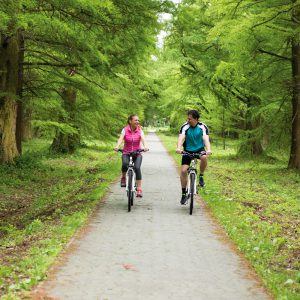 Cycling enthusiasts can enjoy a comfortable tour on the bike path from Hévíz to Keszthely, which is situated on the shore of Lake Balaton. They can get acquainted with Keszthely, the cultural capital of the Balaton region, and then relax on one of the Balaton beaches. Starting from here, they can extend their cycling tour along the lake, or if they want something more sporty, they can cycle further into the Kis-Balaton National Park. With a small backpack, they can spend a whole day in nature, getting to know the countryside and its inhabitants.
Cycling enthusiasts can enjoy a comfortable tour on the bike path from Hévíz to Keszthely, which is situated on the shore of Lake Balaton. They can get acquainted with Keszthely, the cultural capital of the Balaton region, and then relax on one of the Balaton beaches. Starting from here, they can extend their cycling tour along the lake, or if they want something more sporty, they can cycle further into the Kis-Balaton National Park. With a small backpack, they can spend a whole day in nature, getting to know the countryside and its inhabitants.
Flavors of Hévíz
 In spring, when nature awakens, the Hévíz producers’ market offers a particularly colorful culinary tour in the Zala region. The market takes place every week on Tuesday and Saturday mornings and Thursday afternoons. Taste the wonderful sausage and cheese specialties, chat with the farmers, and experience the authentic atmosphere of this small, yet excellent market! From the wine cellars of Egregy Hill to the famous wineries of the Balaton Uplands, enjoy the generous local specialties along with the picturesque sunset. It’s not only worth trying the fine homemade, spicy Hungarian cuisine, but also the regional culinary art, where traditional and modern flavors meet. A special experience, for example, is the Korosajt Cheese Workshop in Nemesbük, where we find wonderful cheese specialties.
In spring, when nature awakens, the Hévíz producers’ market offers a particularly colorful culinary tour in the Zala region. The market takes place every week on Tuesday and Saturday mornings and Thursday afternoons. Taste the wonderful sausage and cheese specialties, chat with the farmers, and experience the authentic atmosphere of this small, yet excellent market! From the wine cellars of Egregy Hill to the famous wineries of the Balaton Uplands, enjoy the generous local specialties along with the picturesque sunset. It’s not only worth trying the fine homemade, spicy Hungarian cuisine, but also the regional culinary art, where traditional and modern flavors meet. A special experience, for example, is the Korosajt Cheese Workshop in Nemesbük, where we find wonderful cheese specialties.
Health preservation
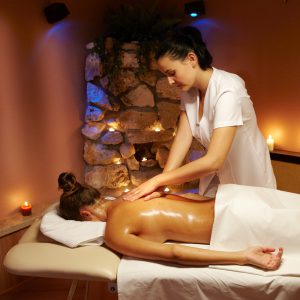 Our grandparents and great-grandparents were well aware of the beneficial effects of bathing. It’s no wonder they went on several-week-long spa treatments and enjoyed the social life and medicinal waters of various spa towns. This heritage of relaxation for body and soul is still alive today, only the possibilities have become more varied, both in terms of treatments and the spas themselves. Today, we can easily vacation in a wellness hotel, enjoying a wide range of SPA services from around the world, combining classic thermal water-based cures, ancient healing methods, and the latest technology in health assessments.
Our grandparents and great-grandparents were well aware of the beneficial effects of bathing. It’s no wonder they went on several-week-long spa treatments and enjoyed the social life and medicinal waters of various spa towns. This heritage of relaxation for body and soul is still alive today, only the possibilities have become more varied, both in terms of treatments and the spas themselves. Today, we can easily vacation in a wellness hotel, enjoying a wide range of SPA services from around the world, combining classic thermal water-based cures, ancient healing methods, and the latest technology in health assessments.
Even the past decades have not dimmed the splendor of the bathing culture. The term thermal bath was automatically associated with pensioners and rheumatic problems, but it was soon recognized that the experience of water is about ourselves, our well-being, the balance of body and soul, and our health. Thermal baths have become fashionable again, regardless of age.
SPA is an abbreviation of the Latin “sanus per aquam,” meaning “health through water.” Another explanation is that there is a Belgian town called Spa, which means fountain in English. The Hévíz cure, focusing on thermal water and traditional balneotherapy, is an important part of the wide range of wellness therapies, medical treatments, and health preservation programs. Drinking cures, as well as the unfairly almost forgotten mud packs and mud baths, also top the list of the most effective therapeutic methods.
The Region
 The hills around Hévíz offer numerous excursion spots for both young and old. Discover the cultural heritage, untouched nature, and the unique, welcoming culture of the locals! During a visit to a wine cellar or a small inn, you can get acquainted with the culinary diversity and fine wines of the Balaton region. Go on a safari tour in the unique natural paradise of Kis-Balaton National Park, where you can observe water buffaloes and countless species of birds! History becomes tangible at the Sümeg Castle and the Festetics Palace in Keszthely, while the most beautiful panorama of Lake Balaton can be seen from the Szépkilátó in Balatongyörök or the top of the castle ruins in Szigliget. From here, even the witness hills of the Balaton Uplands are visible. An excursion to one of Central Europe’s most beautiful landscapes, the Balaton Uplands, through authentic villages hidden among the hills, is always a special experience.
The hills around Hévíz offer numerous excursion spots for both young and old. Discover the cultural heritage, untouched nature, and the unique, welcoming culture of the locals! During a visit to a wine cellar or a small inn, you can get acquainted with the culinary diversity and fine wines of the Balaton region. Go on a safari tour in the unique natural paradise of Kis-Balaton National Park, where you can observe water buffaloes and countless species of birds! History becomes tangible at the Sümeg Castle and the Festetics Palace in Keszthely, while the most beautiful panorama of Lake Balaton can be seen from the Szépkilátó in Balatongyörök or the top of the castle ruins in Szigliget. From here, even the witness hills of the Balaton Uplands are visible. An excursion to one of Central Europe’s most beautiful landscapes, the Balaton Uplands, through authentic villages hidden among the hills, is always a special experience.
The best time to travel
From late March to the end of June and from early September to the end of November. During the summer months, Lake Balaton is an excellent choice for lovers of water sports or those wishing to enjoy the beach.
Tips and attractions:
Wine Cellars: Roman Cellar in Hévíz/Egregy, Folly Winery in Badacsonyörs, Szent Antal Winery in Szigliget
Culinary Experiences: Fine Dining at Bock Bistro in Vonyarcvashegy, fresh fish specialties at Oszi Bácsi Keszegsütödéje in Badacsonyörs, regional specialties at the Öreg Harang tavern in Hévíz
Beaches on the shores of Lake Balaton: Libás Beach in Keszthely, Diási Play Beach in Gyenesdiás, Lido Beach in Vonyarcvashegy
Excursion Sites: Kis-Balaton National Park, one-day trips through authentic small villages in the Balaton Uplands, scenic hilly landscapes, Tihany Peninsula
Bike Routes: Hévíz-Keszthely-Hévíz bike tour (approx. 8 km), Kis-Balaton National Park bike tour (approx. 40 km), Szigligeti Balaton bike tour (approx. 50 km)
Hiking Trails: Hike to the basalt organs (Szent György Mountain Basalt Organasípok), hike to the Vadlánlik Cave (Gyenesdiás), hike to the Csobánc Great Field (Gyenesdiás, Csobánc Nagymező)
Exceptional Souvenirs: ZADOR soaps, ceramics from J&A Ceramics in Gyenesdiás, regional cheese specialties from the Korosajt Cheese Workshop in Nemesbük.
Sights in the vicinity
Balaton Minor (20 km South)
 Balaton Minor is a region located southwest of Lake Balaton, rich in natural and cultural values with most of its area classified as a nature preserve. The region includes the estuary of the river Zala, which was always a swamp-like region known for its fluctuating water levels. Balaton Minor has such rich wildlife (flora, fish and birdlife) that it falls under the Ramsar Convention on wetlands of international importance and nesting grounds.
Balaton Minor is a region located southwest of Lake Balaton, rich in natural and cultural values with most of its area classified as a nature preserve. The region includes the estuary of the river Zala, which was always a swamp-like region known for its fluctuating water levels. Balaton Minor has such rich wildlife (flora, fish and birdlife) that it falls under the Ramsar Convention on wetlands of international importance and nesting grounds.
Sights:
• Kányavár Island (22 km)
• Lake Balaton Minor Visitor House, Zalavár (20 km)
• Castle and reconstructed Árpád-era temple, Zalavár, Castle Island (20 km)
• Petting zoo – Fenyvespuszta (23 km)
Kányavári Island (20 km South)
 Kányavár Island is the only part of the Balaton Minor region which can be visited without a guide throughout the year.
Kányavár Island is the only part of the Balaton Minor region which can be visited without a guide throughout the year.
The island can be accessed through a unique wooden bridge. The National Park Directorate established the Búbos Vöcsök (Great Crested Grebe) nature trail on the island. Consisting of 15 stations, the trail is 1.5 km in length and can be comfortably completed within approximately one hour. We recommend discovering the northern half of the island in the case of shorter visits. The orientation boards present information on the Minor Balaton birdlife. A wooden bird observation point has been established in the middle of the island and the multi-floor lookout tower has been renovated which can be reached with a few minutes’ walk from the direction of the bridge by turning left at the clearing in front of the observation point. A brand new playground has been created for the little ones in a tranquil field south of the observation point.
Stupa (14 km South)
 The stupa of Zalaszántó is the first Buddhist shrine of Central Europe and also the greatest such building in Europe. The shrine is located next to Zalaszántó on Kovácsi Hill, in the middle of a woodland clearing. It contains some of the earthy remains of Buddha – a few splinters of bone in a decorative case.
The stupa of Zalaszántó is the first Buddhist shrine of Central Europe and also the greatest such building in Europe. The shrine is located next to Zalaszántó on Kovácsi Hill, in the middle of a woodland clearing. It contains some of the earthy remains of Buddha – a few splinters of bone in a decorative case.
Sümegi Castle (24 km North)
 The Sümeg Castle is located in the western reaches of the Upper Balaton region, on top of a lonely peak towering over the surrounding fields. The lower level of the old tower built in the 1260s is the nucleus of the fort, which consists of three separate units. Various knight tournaments and medieval feasts are hosted bi-weekly at the foot of the castle hill along with regular events from Tuesday to Saturday over the summer period.
The Sümeg Castle is located in the western reaches of the Upper Balaton region, on top of a lonely peak towering over the surrounding fields. The lower level of the old tower built in the 1260s is the nucleus of the fort, which consists of three separate units. Various knight tournaments and medieval feasts are hosted bi-weekly at the foot of the castle hill along with regular events from Tuesday to Saturday over the summer period.
Balatonederics Wonderberry Cave (20 km East)
 The Wonderberry Cave is located on the specially protected area Keszthely Plateau. Hungary’s eight-longest cave is the longest and deepest such feature on the Keszthely Plateau. Thanks to its size, spectacular shapes and relatively easily traversable stretches, the cave is perfectly suitable for learning caving and cave exploring techniques as well as demonstrating tectonic processes and features.
The Wonderberry Cave is located on the specially protected area Keszthely Plateau. Hungary’s eight-longest cave is the longest and deepest such feature on the Keszthely Plateau. Thanks to its size, spectacular shapes and relatively easily traversable stretches, the cave is perfectly suitable for learning caving and cave exploring techniques as well as demonstrating tectonic processes and features.
Balatongyöröki Szépkilátó “Lookout” (15 km East)
 The Szépkilátó lookout is located at the eastern end of the village, overlooking the Szigliget bay and calling attention of tourists to the stunning views. The name of the place – szép is Hungarian for lovely – truly captures the nature of the wonderful natural image that visitors at the site can experience.
The Szépkilátó lookout is located at the eastern end of the village, overlooking the Szigliget bay and calling attention of tourists to the stunning views. The name of the place – szép is Hungarian for lovely – truly captures the nature of the wonderful natural image that visitors at the site can experience.
Festetics Palace (7 km South)
 The Festetics Palace is one of the main historical sites of Keszthely. Its construction commenced in the mid 18th century, yet was only completed in the 1880s, subsequent to grand-scale reconstruction and expansion works. Every year, the city hosts a wide range of cultural events, some of which are staged in the grand hall of the Festetics Palace. The palace’s 42-hectare park is a nature preserve, featuring numerous unique tree species. The oldest of the Chine gingko trees planted in the age of György Festetics is 400 years old.
The Festetics Palace is one of the main historical sites of Keszthely. Its construction commenced in the mid 18th century, yet was only completed in the 1880s, subsequent to grand-scale reconstruction and expansion works. Every year, the city hosts a wide range of cultural events, some of which are staged in the grand hall of the Festetics Palace. The palace’s 42-hectare park is a nature preserve, featuring numerous unique tree species. The oldest of the Chine gingko trees planted in the age of György Festetics is 400 years old.
Rezi Castle ruins (16 km Northeast)

The walls of the ruins of Rezi Castle crown the outcroppings of one of the 427 meter-high cliffs of the Keszthely Plateau located northwest of Lake Balaton, at the edge of the village Rezi.


